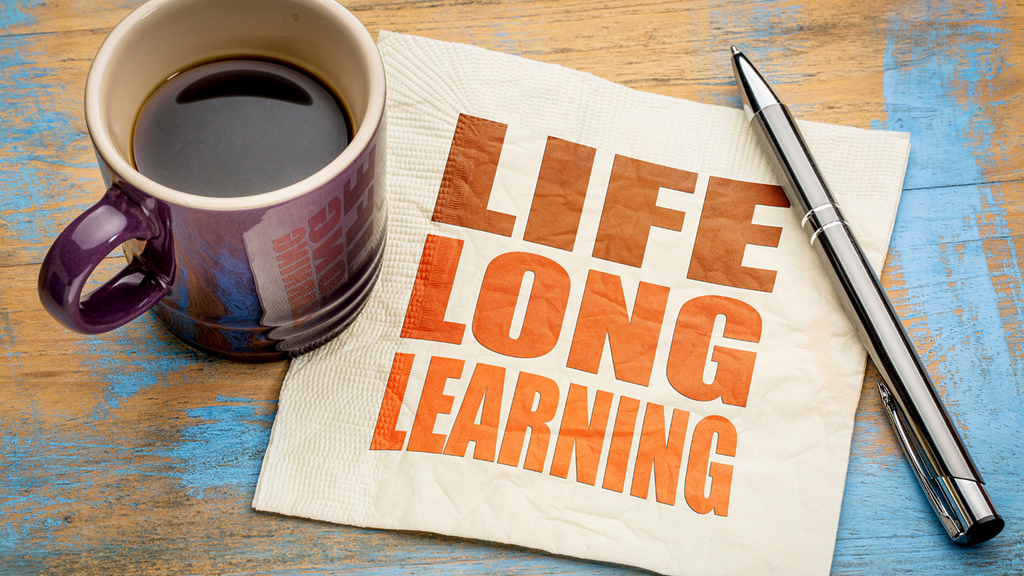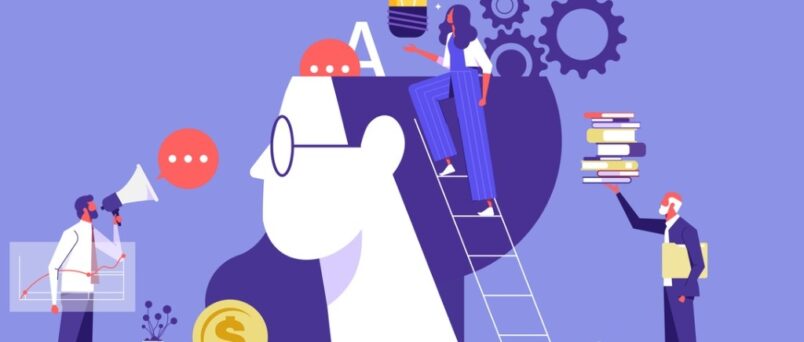What drives us to take action, pursue goals, and keep pushing forward? Motivation is complex, arising from both internal and external factors. But some of the most powerful motivation comes from within. This innate, self-driven motivation is called intrinsic motivation.
When intrinsically motivated, people engage in activities because they find them interesting and inherently satisfying. The reward comes not from some external outcome, but rather from the activity itself. Researchers have uncovered various qualities that make tasks intrinsically motivating and explored ways to foster more self-driven behavior. Below we’ll unpack what intrinsic motivation looks like in action across life domains and why understanding it matters.
What is Intrinsic Motivation?
Intrinsic motivation refers to the natural urge to pursue challenges, explore curiosities, and push one’s capacities just for the reward of doing so. Unlike extrinsic motivation powered by external rewards like money or acclaim, with intrinsic motivation the activity alone is satisfying. People tap into this drive when they stretch their skills, expand their creativity, or immerse themselves in hobbies.
Mihaly Csikszentmihalyi identified such rewarding experiential states as “flow” — optimal experiences where one is so absorbed that self-consciousness falls away. Athletes might enter flow while training. Musicians tap into it when improvising. Gamers find it when facing a well-matched challenge. What enables these states is intrinsic motivation — the pure satisfaction of an activity.
Key Qualities of Intrinsic Motivation
Researchers have identified what makes tasks intrinsically motivating. Consider what draws you to your passions. Chances are they exemplify some of these qualities that spark self-driven engagement:

Skill-Building Challenges
Tasks just beyond one’s comfort zone that stretch skills and build mastery tend to be intrinsically motivating. Think of the focus summoned when learning a new piece on guitar or conquering a climb while rock climbing. Embracing small wins and the satisfaction of incremental progress taps intrinsic motivation.
Curiosity Satisfaction
Exploring the unknown is inherently rewarding for many. Our brains seek information and patterns. So activities that spark curiosity and uncover fascinating discoveries can become addictive. Intellectual challenges that lead to “aha moments” are driven by intrinsic rewards.
Meaningful Choice
Self-direction fuels engagement. When people choose activities that express their authentic interests and values, they bring more intrinsic motivation to them. Even small choices within contexts can heighten investment and effort.
Cognitive Play
Games and puzzles that challenge mental skills are often intrinsically motivating because they tap into our natural love of problem-solving. They drive us to test strategies, shift perspectives, and discover solutions. Brain teasers present just enough difficulty to fully engage us.
Flow States
As described above, absorptive states where skills match demands drive people to sustain focus. In flow, intrinsically rewarding challenges unleash peak motivation until the experience culminates. Then we seek to recreate it. The state demonstrates the pure pleasure possible from intrinsic rewards.
Everyday Examples of Intrinsic Motivation
What does intrinsically-sparked behavior actually look like? Here are some everyday examples that demonstrate the power of self-driven motivation:
Hobbies & Crafts
Free time often goes straight to intrinsically-rewarding leisure pursuits centered on learning. Martial arts students stay late to perfect kicks. Knitters unravel pieces until they produce the perfect stitch. Tinkerers fill garages with woodwork and auto projects—each representing a tantalizing challenge. The joy comes not from outputs but immersion.
Physical Exercise
While social media floods us with images of sculpted abs and toned glutes, the reality is most gym goers are intrinsically-driven. The “runner’s high” demonstrates how exercise built on incremental gains creates its own euphoria. Intrinsic motivation makes repetition of muscle resistance or cardiorespiratory endurance training satisfying. We do it for how it makes us feel.
Travel Exploration
Venturing somewhere new turns on parts of our brains evolved for discovery. Navigating foreign environments offers a feast ofsensory details, cultural contrasts, and moments of wonder that become their own rewards. Even modest weekend road trips allow us to flex intrinsic motivation for exploration. No exotic locale required!
Learning Dives
Delving into research on an intriguing topic can lead to hours disappearing down a rabbit hole. Suddenly we look up from variegated newts, Macedonian politics, or the history ofMargins of Errors to realize the intrinsic joy of gathering bits of information has overtaken the afternoon. No deadline in sight!
Creative Pursuits
Painting, writing songs, editing videos—creative acts result more from intrinsic motivation than hopes of fame. We do them becauseimagining then making sparks deep satisfaction. Dabbling in creative pastimes exercises mental capacities in playful ways that make time fly by —no external reward structure needed.
Gaming

While some play to socialize or escape, gaming often represents an experimental playground. The chance to test skills against novelchallenges unlocks intrinsic drive to keep raising the bar. Gamers repetitively tweak strategies and risk failure for the inherent pleasure perfecting tactics until they beat levels. No extrinsic outcomes required.
Fostering Greater Intrinsic Motivation
If intrinsically-fueled activities can bring such fulfillment, how do we encourage more self-driven behavior whether at work, school, home or play? Supporting basic needs is key. Researchers identified sources that enable intrinsic motivation to flourish:
Autonomy
Ensure people have space for self-direction and input on tasks, processes or rules. Even small gestures of choice and consent boost intrinsic motivation. Help identify passions and remove arbitrary constraints.
Mastery
Nurture folks’ desire to gain skills by structuring challenges that incrementally stretch abilities. Break bigger goals into subtasks that enable small wins. Give supportive feedback on objective measures not traits. model growth mindset.
Relatedness
Build interpersonal bridges and normalize asking for help. Emphasize collaboration over competition. Bond people through team challenges. Enable peer teaching and mentorship. Create psychologically safe environments.
Meaning
Connect activities or policies to larger purpose when possible. Explain why particular tasks matter and how they contribute to community or ideals. Share how work aids self-development on skills valuable beyond current roles.
Why Intrinsic Motivation Matters
Some may wonder if intrinsic motivation is a luxury earned only after meeting basic needs. But research finds these innate drives evolve to help us learn, adapt and thrive across environments. And self-driven behavior often outperforms extrinsically rewarded work across measures:
Enhanced Performance
Studies on incentives consistently show that higher extrinsic rewards (money, fame, prizes) undermine intrinsic motivationand hurt performance on tasks requiring creativity or cognitive flexibility. Self-driven people show more persistence, talent development, and goal attainment.
Greater Well-Being
Motives affect emotions, which in turn impact health. People driven by intrinsic versus extrinsic goals report better psychological adjustment and life satisfaction. Their relative autonomy enables more flow. Innate drives reduce stress when aligned with activities.
Lifelong Learning

Intrinsic rewards make us more likely to repeatedly seek out new challenges that exercise unused skills. Such motivational diversity leads to wider ranging pursuits. This tendency fosters the openness and curiosity critical for continually acquiring new talents and knowledge.
In the end, people spend most of their waking hours engaged in activities driven substantially by intrinsic—not extrinsic—motivation even if they assume otherwise. Work and academics dole out plenty of extrinsic carrots and sticks, but in between we explore hobbies, connect with others, and tap into flow. Understanding intrinsic drivers reveals levers that empower.
FAQs
Are extrinsic rewards always bad for intrinsic motivation?
No—many tasks people must complete are not inherently interesting or joyful. And extrinsic drive is still motivation! But when incentives are too controlling/behaviorist they can undermine intrinsic motivation that was present. Best practice: Provide rationale for necessary tasks before layering on rewards. And incorporate elements of autonomy/choice when possible.
Can you motivate other people intrinsically?
Not directly. Intrinsic motivation is self-driven by definition. But you can help uncover and unleash more of people’s innate passions and talents. Support attempts to self-direct. Allow time for meaningful practice/skill-building. Connect work to purpose. Build autonomy; don’t control. Above all, nurture don’t neuter existing intrinsic motivation.
Isn’t all motivation ultimately extrinsic? We have to earn money!
Work and school necessarily involve plenty of extrinsic drive. But many studies show between 50-80% of motivation for most activities is actually intrinsic not extrinsic across domains like learning, gaming, exercise, hobbies and more. Pay helps get us in the door, but often passion, meaning and challenge keep us there.
What if someone just isn’t intrinsically motivated?
Some neurodiversity like ADHD or mood disorders can make activating intrinsic motivation challenging regardless of environment. In those cases it becomes even more critical to tailor extrinsic rewards, chunk objectives, clearly explain rationales, and foster supportive communities.

